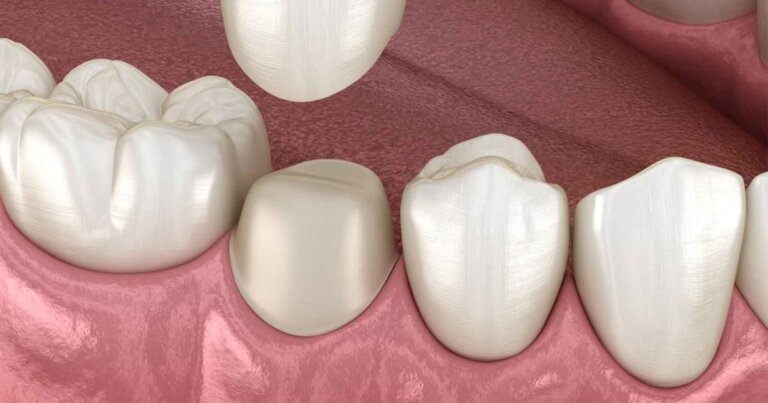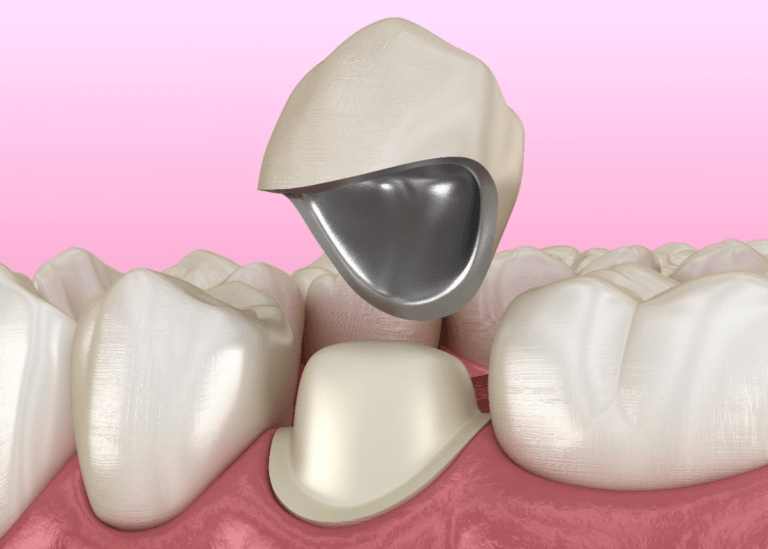Loose Dental Crown

What Is A Loose Dental Crown?
A dental crown is a type of dental restoration that is placed over a tooth to protect it and restore its shape, size, and strength. Crowns are typically made of materials such as porcelain, ceramic, or metal, and are designed to last for many years with proper care. They are bonded to the tooth using a special dental cement.
However, in some cases, a dental crown may become loose and feel wobbly in the mouth. Even though the crown has not fallen out completely yet, this can be a concerning issue for many dental patients, as a loose crown can cause discomfort, sensitivity, and even damage to the underlying tooth structure.
Before you contact a Toronto dentist to examine a Loose Dental Crown, there are some things you should know as a patient:
- Why Do I Have A Loose Dental Crown?
- Signs And Symptoms Of A Loose Dental Crown
- Treatment Options For A Loose Dental Crown
- How To Prevent A Loose Dental Crown
- Managing A Loose Dental Crown Until You Can See The Dentist
If you have questions about Loose Dental Crown or other dental problems, please contact us for more information.
Why Do I Have A Loose Dental Crown?
A loose dental crown can be caused by a variety of factors, including:
- Tooth decay: If the tooth underneath the crown develops dental caries, it can weaken the adhesive bond between the tooth and the crown, causing the crown to become loose.
- Trauma: A blow to the face or mouth can cause a crown to loosen or even fall off.
- Teeth grinding or clenching: Excessive grinding or clenching of teeth can cause the crown to become loose or even break.
- Age: Over time, the cement that holds the crown in place can degrade and weaken, causing the crown to loosen.
- Poor oral hygiene: A lack of proper oral care can create unfavorable oral conditions that can degrade the cement that holds the crown to the tooth.
It’s important to address a loose dental crown as soon as possible to avoid further damage to the underlying tooth and to prevent the crown from falling out. If you have further questions about a Loose Dental Crown, please contact us.
Signs And Symptoms Of A Loose Dental Crown
If you have a loose dental crown, you may experience one or more of the following signs and symptoms:
- Sensitivity: You may feel pain or sensitivity in the tooth when you eat or drink hot, cold, or sweet foods and beverages.
- Wobbliness: The crown may feel loose or wobbly in your mouth, or you may notice that it moves when you touch it with your tongue or fingers.
- Bite feels off: If the dental crown has shifted as a result of it becoming loose, the way your teeth come together may not feel normal.
- Discomfort: You may experience discomfort or pain when you bite or chew, or when you close your mouth.
- Bad taste: If bacteria have accumulated under the crown, you may notice a bad taste or odor in your mouth.
- Visible damage: You may notice visible damage to the crown, such as chips, cracks, or wear.
If you experience any of these signs or symptoms, it’s important to contact your dentist as soon as possible. If you have further questions about a Loose Dental Crown, please contact us.
Treatment Options For A Loose Dental Crown
If you have a loose dental crown, there are several treatment options available, including:
- Recementation: Your dentist may be able to simply remove and recement the loose crown back onto the tooth. This involves cleaning the crown and the tooth, applying new dental cement, and carefully placing the crown back into position.
- Crown replacement: If the crown is damaged or cannot be securely recemented, your dentist may need to replace the crown entirely. This involves removing the loose crown, preparing the tooth for a new crown, and placing a new crown onto the tooth.
- Root canal therapy: If the underlying tooth is decayed has become infected or damaged, your dentist may need to perform root canal therapy to clean out the infected nerve space inside the tooth before placing a new crown.
- Extraction: In rare cases where the tooth or crown cannot be saved, your dentist may need to extract the tooth and discuss replacement options, such as a dental implant or dental bridge.
The best treatment option for a loose dental crown will depend on the specific circumstances of your case, such as the cause of the looseness, the condition of the underlying tooth, and the overall health of your mouth. If you have further questions about treatment options for a Loose Dental Crown, please contact us.

How To Prevent A Loose Dental Crown
While some causes of a loose dental crown may be out of your control, there are steps you can take to minimize the risk of experiencing a loose crown, including:
- Practice good oral hygiene: Keeping the area around the dental crown as clean can help prevent damage to your crown. Brush and floss gently around the tooth. Rinsing your mouth with warm salt water or mouthwash can help reduce infection, inflammation and alleviate toothache pain. You can buy any mouthwash available at your pharmacy or health foods store. Alternatively, you can mix a teaspoon of salt in a cup of warm water and swish the solution around your mouth for about 30 seconds before spitting it out.
- Visit your dentist regularly: Regular dental check-ups can help identify and address any issues with your dental crown before they become more serious.
- Avoid hard or sticky foods: Chewing on hard or sticky foods, such as ice or caramel, can put extra pressure on the crown and cause it to become loose.
- Wear a mouthguard: If you participate in sports or grind your teeth at night, wearing a mouthguard can protect your teeth and the crown from dental trauma.
- Address bite issues: If you have a misaligned bite or grind your teeth, talk to your dentist about options to address these issues, such as orthodontics or a nightguard.
By taking these steps, you can help ensure the longevity of your dental crown and reduce the risk of experiencing a loose crown. However, if you do experience a loose dental crown, it’s important to seek prompt treatment from your dentist to prevent further damage or infection. If you have further questions about a Loose Dental Crown, please contact us.
Managing A Loose Dental Crown Until You Can See The Dentist
If you are unable to see your dentist immediately after noticing a loose dental crown, there are steps you can take to manage the situation and minimize discomfort, including:
- Avoid hard or sticky foods: As mentioned earlier, avoid foods that require heavy chewing or can stick to the crown and pull it off.
- Practice good oral hygiene: Brush gently around the crown and floss regularly to prevent further damage and bacterial buildup around the loose crown. The Waterpik waterflosser is also a terrific adjunctive tool to keep the area under a loose dental crown clean.
- Use temporary dental adhesive: Temporary dental adhesive can be purchased over-the-counter at your pharmacy and used to temporarily reattach the loose crown to the tooth. Apply the adhesive sparingly to the inside of the crown and gently press it back onto the tooth. However, this is only a temporary solution and should not be used as a long-term fix.
- Use Over-the-Counter Pain Medication: Over-the-counter pain medication, such as Advil (ibuprofen) or Tylenol (acetaminophen), can help relieve tooth pain or sensitivity from a loose dental crown. Follow the instructions on the label and do not exceed the recommended dose. Unless you have a health condition that prevents you from taking either ibuprofen or acetaminophen, the absolute maximum dose that I recommend patients take for the worst dental pain is 600 mg ibuprofen combined with 1000 mg acetaminophen every 4 to 6 hours.
It’s important to keep in mind that these are only temporary measures, and you should still seek prompt treatment from your dentist as soon as possible to prevent further damage or infection. Your dentist will be able to assess the situation and provide you with the best course of action. If you have further questions about a Loose Dental Crown, please contact us.

